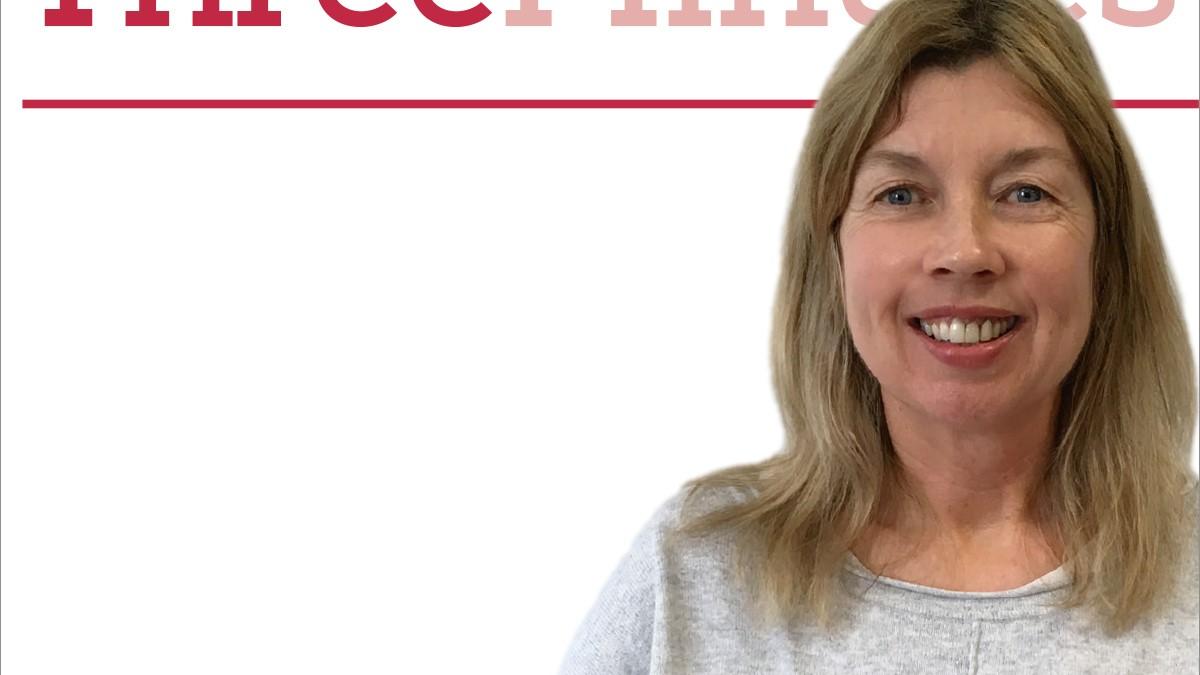Highly specialist physiotherapist Sandra Philip-Rafferty helps people with eating disorders in the Aberdeen area and beyond to find a route back to health.
What sparked your interest in eating disorders?
After I graduated from the Grampian School of Physiotherapy in 1988 (it seems so long ago!), I completed my clinical rotations, before my next position in mental health and psychiatry at Royal Cornhill Hospital in Aberdeen. I am still here 28 years later, and have spent the last nine years in the field of eating disorders. In my earlier days, I was involved in the treatment of patients with eating disorders and could see how physiotherapy was relevant. As well as working clinically, my drive has been to educate colleagues, students and NHS services about physiotherapy in this area. I continued to do this during six years as the first physiotherapist in the north of Scotland eating disorders unit. For two years, I have worked in the multidisciplinary team in the outpatient eating disorder service in Aberdeen.
Are there many physios in this field?
We are growing in numbers and have a strong team as part of our UK-wide professional network, meeting two or three times a year. Much of my work/education has been influenced by international colleagues. I went to Sydney, Australia, in 1996 to look at the work of the late Professor Peter Beumont, the pioneering psychiatrist who changed attitudes towards eating disorders. Physios in Scandinavia and the Benelux countries seem to have greater resources and recognition. This is changing slowly and I feel encouraged that in Aberdeen we now have two highly specialist physios integrated within the inpatient and outpatient teams.
How can physiotherapy help?
We see people with all types of eating disorder, including anorexia nervosa, bulimia nervosa, atypical eating disorders, binge eating disorder and eating disorders not otherwise specified, or EDNOS. Alongside these diagnoses, there may be other co-morbidities, such as personality disorder, diabetes, depression, and anxiety. We work with main common areas – management of compulsive exercise/activity and body image. There is a great focus on mind-and-body work too. Each patient is treated individually as no two presentations are the same. Careful consideration is given to the physical and mental health risks of an eating disorder and to the patient’s readiness to engage in change.
Are patients usually keen to commit?
I do meet resistance as the eating disorder can be very powerful for the patient. It is important that I help my patients to understand that but also ensure that I see them at the appropriate stage of readiness to engage, ensuring a patient-centred and stepped care approach.
What do you offer?
I am funded for 15 hours so it is quite a challenge at times. I wear two hats. In addition to my physiotherapy role, I work generically to triage and assess new patients. I don’t see them for physio at this point. At triage, I will also make a diagnosis, design a general treatment plan and order any physical monitoring as well as giving advice to the patient’s GP. Physiotherapy is integrated into our stepped care approach so a patient will be referred to me at an appropriate stage of treatment. I offer individual and group work in basic body awareness therapy, exercise and activity management, and mirror therapy.
Here is some patient feedback
- ‘the physiotherapist has helped me to understand the links between my exercise and my eating disorder’
- ‘the mirror work helped me to be more accepting of my body and my perception of it has changed for the better’
In your spare time?
My next project is to organise our 30-year physiotherapy reunion! I keep fit and love socialising and travelling. Family life is busy – I am married to Tony, who also works in the NHS, and we have a teenage daughter, Hollie, a cat and two guinea pigs.

Number of subscribers: 1




































